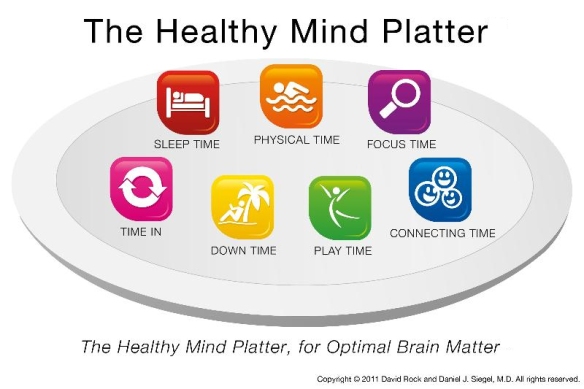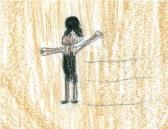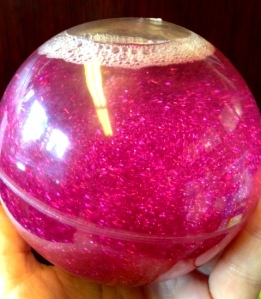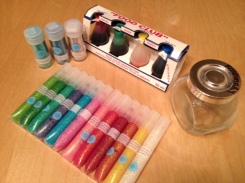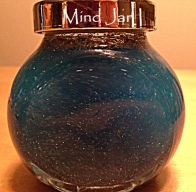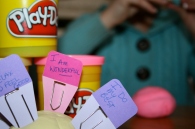A couple of weeks ago, I had the opportunity to spend a couple of days learning from Dan Siegel when he came to Coquitlam as the keynote presenter for our district’s professional development day. With a colleague, I was fortunate enough to have the opportunity to collect him from his Vancouver hotel and bring him back to Coquitlam to present that evening to our district parent community.
To me, Dan Siegel is the rock star of the mindfulness education world so, not surprisingly, I saw this as a pretty amazing opportunity. So much so, that I made the effort to slip a mention of my afternoon excursion into as many conversations as I could. While my enthusiasm was lost on some, it was most certainly felt by others. As the day wore on, my shameless name dropping had somehow unexpectedly landed me with a list of “must asks”. Some questions were around how to foster resiliency, others were on specific aspects of the MindUP program, and one, from my educator cousin, was on the values of transpersonal psychology. How exactly do you slip transpersonal psychology into a typical conversation?
On the long drive back in Vancouver rush hour traffic, I had the opportunity to speak one-on-one with Dan on everything from education, to politics, to B.C. culture and travel. I also managed to touch on a couple of the “must-asks,” although transpersonal psychology did not make the cut. The car ride was just the launching point for two enriching Dan Siegel filled days. In addition to attending the DPAC parent talk that night, over 1000 Coquitlam teachers heard Dan Siegel’s keynote the following day, and a few, including myself, had the opportunity to ask questions in a smaller setting after the keynote address was finished.
With pages of notes and the rest and time that comes with Spring Break, I have finally had the opportunity to weed through all the information I had collected in order to make sense of it all. I took a lot away from Dan Siegel’s visit but, in no particular order, the following nuggets of wisdom stood out:
* Be open to who a child is and let go of who you want them to be because when we don’t accept children for who they are we are actively telling them they aren’t good enough: This was a big one for me. As educators and parents, we have dreams for our children. Recognizing that these dreams may be “ours” and not “theirs” is a key to understanding children for who they are. The potential of a child is infinite; don’t limit a child by our vision of what they could or should become.
* It is not a child’s temperament that determines success but rather how parents and adults respond to that temperament: As educators, we all know that some temperaments are easier to deal with than others. Trying to see the strengths and opportunities behind the temperaments that don’t always make our lives easier can be a worthy challenge.
* A survive moment is also a thrive moment: As a teacher, and administrator, helping some students and parents understand this one can be challenging. It is only natural to want to protect your child from life’s difficulties. Yet when we do this, we send children the message that they aren’t capable of solving their own “child-sized” problems. We can also hinder the accountability that is so necessary as they move through life, as accepting accountability for actions and trying to right our own wrongs is key to learning and making better choices in the future. This doesn’t mean we leave children entirely to their own devices. What it does mean is rather than sheltering them from life’s difficulties, as parents and educators, we need to help them understand these experiences and learn from them.
* The 3 new R’s of Education should be Reflection, Relationships and Resilience: When children are interconnected, in tune with others, and have the capacity to be reflective, it increases empathy and understanding for the self and others. The ability to be reflective and to understand the self and others is what builds resiliency.
* Education should strive to integrate the left and right sides of the brain: As educators, we tend to teach to the logical left brain and ignore the emotional right brain. Creating an interconnectedness between the two can be a challenge but is an important key to creating a whole-brain child.
* We are not a singular noun but a plural verb: I love this! As educators, we need to capitalize on the brain’s built-in capacity for social interaction and create positive mental models of relationships. The “me” discovers meaning and happiness in life by belonging to a “we.” Check out one of my absolute favorite documentaries “I Am” for more on this subject. You can watch the full documentary on ITunes.
* Feelings are not facts: Students need to understand that feelings come and go. They are temporary states of mind that are ever changing. By developing mindsight, or the ability to look inside your own mind as well as the minds’ of others, students are better able to deal with ever-changing emotions. If you want to understand more about how this is done, reading Dan Siegel’s new book “The Whole-Brain Child,” is a great place to start.
* The Healthy Mind Platter: Similar to our food guidelines, which are designed to keep our bodies healthy, the Healthy Mind Platter is a great reminder of the simple things we need each day to stay mentally healthy. I heard of one teacher who labelled classroom activities based on where they fell on the healthy mind platter. This is a brilliant idea and a constant reminder to children that a healthy mind is as important as a healthy body.
The list of takeaways above are really just a few of the key gems I took away from hearing Dan Siegel speak. With that said, it hopefully gives you a bit of a flavour for who he is and will hopefully inspire you to learn more about nurturing the whole-brain child. If you are interested in exploring the topic further, here are a couple of great starting points.
 Dan Siegel’s book “The Whole-Brain Child: 12 Revolutionary Strategies to Nurture Your Child’s Developing Mind”
Dan Siegel’s book “The Whole-Brain Child: 12 Revolutionary Strategies to Nurture Your Child’s Developing Mind”
The Dan Siegel Website: Full of great resources, including more on the healthy mind platter, videos, and audio of his wheel of awareness and breathing practices.
Video Series: 6 steps to Build Kindness and Resilience in Children with Dan Siegel



